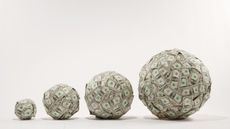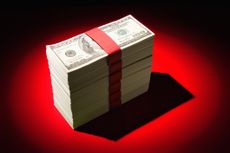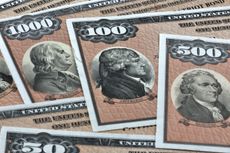Earn Dividends From Preferred Stocks
Yields are superb, but these investments are riskier and more complex than you may think.

Does a 7.3% yield whet your income-starved appetite? That's what the average preferred stock currently pays. Tempting, for sure. But don't jump into these quirky securities before you understand their ins and outs.
Preferreds pay fixed dividends. That makes them similar to bonds, which usually pay a set amount of interest. When it comes to paying dividends, preferred investors get preference over holders of common stock. A firm must ax common-stock dividends before it tampers with preferred payouts. Preferred holders also get preference over common holders in the event a company liquidates, though bondholders get first dibs on the firm's assets.
Preferreds generally yield more than a company's common stock and sometimes yield more than the firm's bonds. In addition, dividends from some preferred stocks are qualified, meaning that they are taxed at a top federal tax rate of 15%. (Nonqualified dividends are taxed at a maximum federal rate of 35%. It's best to use nonqualified preferreds inside of tax-deferred accounts, such as IRAs.)

Sign up for Kiplinger’s Free E-Newsletters
Profit and prosper with the best of expert advice on investing, taxes, retirement, personal finance and more - straight to your e-mail.
Profit and prosper with the best of expert advice - straight to your e-mail.
Preferreds are less risky than common stocks but offer less opportunity for appreciation. Ignore preferreds' spectacular climb from March 2009 through March 2010. During that period, iShares S&P U.S. Preferred Stock Index (symbol PFF), an exchange-traded fund that tracks an index of more than 220 issues, soared 181%. The surge followed an equally stunning flameout during the financial crisis.
A replay of the 2008-09 cataclysm isn't likely anytime soon. The bigger risk to preferred values today is rising inflation and interest rates. Because preferreds pay fixed dividends, higher rates could force down preferred share prices. "Preferreds really start to fall apart when inflation hits," says Ken Winans, president of Winans International, a Novato, Cal., investment firm.
Preferreds don't have fixed maturity dates, but most may be redeemed by their issuers. Before buying a preferred, find out when it can be called and at what price. If the call price is below the current price, you could lose principal if the stock is redeemed. Note, too, that most preferred issuers are in the financial sector; more than 80% of the iShares ETF's assets are in preferreds issued by financial firms.
Of the six preferreds listed in the table below, only one is issued by a financial company. Don't be surprised by the so-so Standard & Poor's quality ratings, which are at the low end of investment grade for five of the issues and in junk territory for Ford. The preferred rating is usually a level or two below a company's bond rating.
In the end, the iShares ETF may be the best choice for most investors, even though it distributes a mix of qualified and nonqualified dividends. From its launch in March 2007 through February 11, it returned an annualized 1.9%, a figure that includes a 23.8% loss in 2008. Over the past year, the ETF gained 13.8%. The fund, which charges annual fees of 0.48%, yields 6.5%.

-
 Pros and Cons of Waiting Until 70 to Claim Social Security
Pros and Cons of Waiting Until 70 to Claim Social SecurityWaiting until 70 to file for Social Security benefits comes with a higher check, but there could be financial consequences to consider for you and your family.
By Patrick M. Simasko, J.D. Published
-
 Now Could Be Time for Private Investors to Make Their Mark
Now Could Be Time for Private Investors to Make Their MarkThe venture capital crunch may be easing, but it isn't over yet. That means there could be direct investment opportunities for private deal investors.
By Thomas Ruggie, ChFC®, CFP® Published
-
 Best Banks for High-Net-Worth Clients
Best Banks for High-Net-Worth Clientswealth management Kiplinger's 2023 list of the best banks for higher-net-worth clients.
By Lisa Gerstner Published
-
 Stock Market Holidays in 2024: NYSE, NASDAQ and Wall Street Holidays
Stock Market Holidays in 2024: NYSE, NASDAQ and Wall Street HolidaysMarkets When are the stock market holidays? Take a look at which days the NYSE, Nasdaq and bond markets are off in 2024.
By Kyle Woodley Last updated
-
 Stock Market Trading Hours: What Time Is the Stock Market Open Today?
Stock Market Trading Hours: What Time Is the Stock Market Open Today?Markets When does the market open? It's true the stock market does have regular hours, but trading doesn't necessarily stop when the major exchanges close.
By Michael DeSenne Last updated
-
 Bogleheads Stay the Course
Bogleheads Stay the CourseBears and market volatility don’t scare these die-hard Vanguard investors.
By Kim Clark Published
-
 5 of the Best Preferred Stock ETFs for High and Stable Dividends
5 of the Best Preferred Stock ETFs for High and Stable DividendsETFs The best preferred stock ETFs allow you to reduce your risk by investing in baskets of preferred stocks.
By Kyle Woodley Last updated
-
 I-Bond Rate Is 5.27% for Next Six Months
I-Bond Rate Is 5.27% for Next Six MonthsInvesting for Income I-Bonds issued November 1, 2023 through April 30, 2024 will have a rate of 5.27%.
By David Muhlbaum Last updated
-
 What Are I-Bonds?
What Are I-Bonds?savings bonds Inflation has made Series I savings bonds enormously popular with risk-averse investors. So how do they work?
By Lisa Gerstner Last updated
-
 This New Sustainable ETF’s Pitch? Give Back Profits.
This New Sustainable ETF’s Pitch? Give Back Profits.investing Newday’s ETF partners with UNICEF and other groups.
By Ellen Kennedy Published